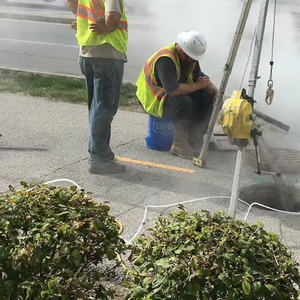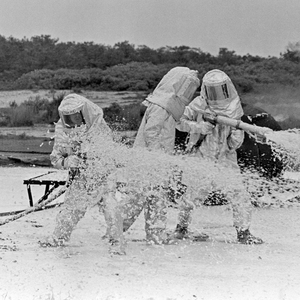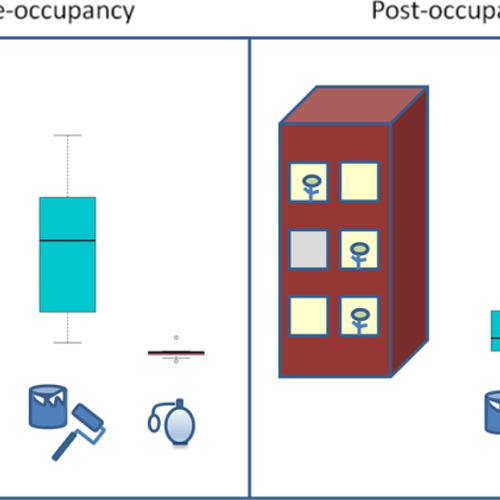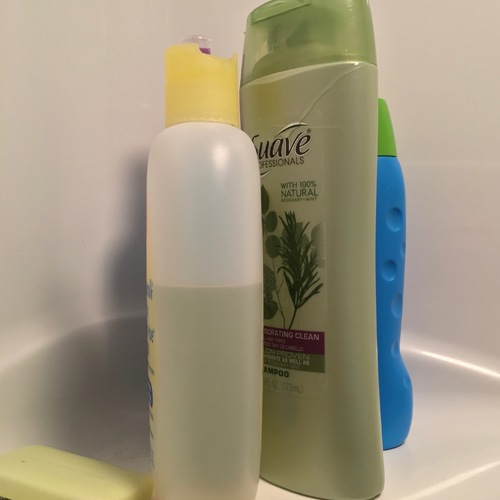
Image Credit: Think Stock
Products as diverse as pizza boxes, architectural membranes, certain paints, carpet treatments, and coatings for metal roofing contain a common type of chemical that is drawing fresh concern from a group of scientists, public health experts and others.
The New York Times reported that scientists are concerned about a class of chemicals called poly- and perfluoroalkyl substances (PFASs).
DuPont and other manufacturers dropped one type of PFAS over concerns the chemical increased the risk of cancer and caused other health problems. Chemicals developed to replace that PFAS are the focus of new health warnings, The Times reported.
The chemicals are used in thousands of products. According to the FluoroCouncil, an industry trade group, the list includes a variety of building materials, such as architectural membranes, caulk, wire and cable, paint and metal roof coatings. PFASs make materials more durable, more UV-resistant, and less likely to corrode, among other things.
Scientists call for more research
Writing in Environmental Health Perspectives, Linda Birnbaum, the head of the national toxicology program for the Department of Health and Human Services, pointed to a statement called the Madrid Statement, which warns of the dangers of PFASs.
“The Madrid Statement documents the scientific consensus about the extreme environmental persistence, bioaccumulation, and potential toxicity of the overall class of PFASs,” Birnbaum and fellow author Philippe Grandjean wrote.
Since the document was presented at a conference in Madrid, Spain, in 2014, more than 200 scientists and professionals from 40 countries have signed it, she added.
The FluoroCouncil says the replacement PFASs, called short-chain PFASs, are much less dangerous than the original long-chain PFASs, and that they are not expected to harm either human health or the environment.
The authors, however, cited warnings that the two groups of chemicals aren’t really that different.
“Given the fact that research raised concern about the long-chain PFASs for many years before action was taken and that global contamination and toxicity have been documented in the general population, potential risks of the short-chain PFASs should be taken into account when choosing replacements for the longer-chain compounds,” they wrote.
There are numerous examples of industry replacing one group of chemicals with another, they said, adding, “Manufacturers may yet incur costs if the closely related alternative is later found to be as toxic as its predecessor.”
They called for more research into the potential health risks from short-chain PFASs, and suggested safe alternatives for all current uses of PFASs be identified.
“The question is, should these chemicals continue to be used in consumer products in the meantime, given their persistence in the environment?” they wrote. “And, in the absence of indisputably safe alternatives, are consumers willing to give up certain product functionalities, such as stain resistance, to protect themselves against potential health risks?”
Industry calls the chemicals ‘essential’
The American Chemistry Council said PFASs were “essential technology for many aspects of modern life,” according to the article in The Times, and that tests by the Environmental Protection Agency found the newer PFASs were safer than the chemicals they replaced.
“We don’t dismiss the right of folks to debate this,” said Thomas Samples, DuPont’s head of risk management for the division that makes the chemicals. “But we just believe based on the 10-year history of extensive studies done on the alternatives that the regulatory agencies have done their job of determining that these things are safe for the intended uses.”
Weekly Newsletter
Get building science and energy efficiency advice, plus special offers, in your inbox.















0 Comments
Log in or create an account to post a comment.
Sign up Log in